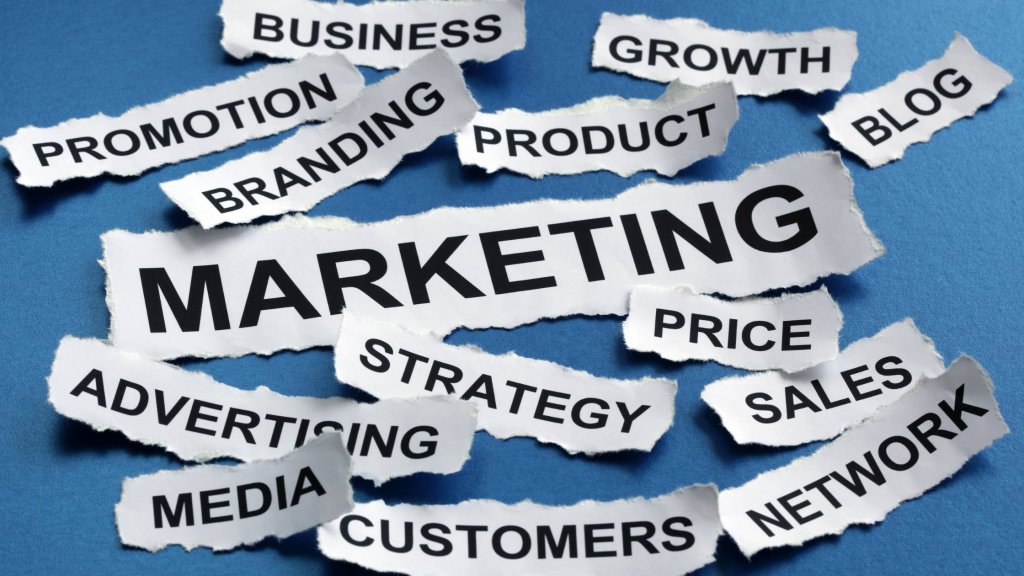Measure Twice-Cut Once: Marketing Lessons from a Carpenter
Marketing for small businesses is frequently a challenge, but it doesn’t have to be. I learned a lesson about successful marketing while I was working my way through college. Although I didn’t realize the application of the knowledge until later, this lesson has stuck with me.
One summer, while going to college, I worked for a company that made kitchen cabinets. My job was to cut the front frame where the cabinet doors attached. On my first day of work, I asked the Head Carpenter what was the most important thing about the job, besides not cutting my fingers off? He said to always remember to “measure twice – cut once”. As we became friends, he jokingly reminded me for most of the summer; “measure twice, cut once”, it almost became my nickname. To this day, when I drag out a piece of wood to cut for a home repair project, I still laughingly say, “measure twice – cut once.”
Sales and Marketing Activities Today
Fast forward to today. I have since realized that I owe much of my success in the world of sales and marketing for small businesses to that same rule of measuring, not measuring wood in this case, but my sales and marketing activities. As salespeople, we face an ever-growing list of sales and marketing activities that we can spend our time and money on; many of these tools are more powerful than we could ever have imagined. The likes of Facebook, Email, Twitter, LinkedIn, the Web and who knows what’s next are constantly pulling us to choose them to be the next marketing concepts.

Why is Measurement in Marketing for small businesses so Important?
As small business owners, we might say that we’ve reached a point of too many choices and not enough time. But too many choices is exactly the point why measuring is an absolute must. It’s easy to just grab on to the latest-greatest marketing thing, especially if everybody else is doing it or it’s getting the latest press. So, pick the latest-greatest, choose the easiest, pick the cheapest; I don’t care. What I care about is that you measure twice and cut what doesn’t work because you don’t have the time or budget to waste chasing down every narrow little marketing idea that pops up.
The role of measurement in sales and marketing activities today
When it comes to making informed marketing decisions, measurement plays a key role. However, keep in mind that there are many marketing concepts, and some of them could be considered intangible (i.e., brand awareness). Below are four examples of what I believe is important for any business looking to gain a competitive advantage through effective marketing: choosing an approach that uses all available resources; developing promotional activities based on customer needs and behaviors; effectively addressing competition; and understanding consumer decision-making processes. Now let’s take a closer look at each one:
Choosing an approach that makes use of all available resources: help you streamline your efforts, so you’re not wasting money on techniques or marketing concepts that aren’t bringing in results; help find the right balance between all the different activities (i.e., advertising, new product development, sales promotion) to ensure they work together effectively without being redundant or conflicting; and give a clear focus for all marketing activities by helping you stay true to your overall business goals and objectives.
Developing promotional activities based on customer needs and behaviors: help marketers figure out who their target market is; what products/services the company offers; which channels should be used for promotion (i.e., social media as opposed to television commercials); how customers are likely to behave when exposed to specific tools/techniques (or how effective each one is at getting customers/clients to respond); and what type of communication will be most effective.
Effectively addressing competition: helps you understand how well your competitors are doing; the strengths and weaknesses of the organization (through analysis of competitor activity, resources, etc.); where they get their money from; how successful they are in different regions; which products/services have the highest demand and so on… In short, it gives you a complete picture of the market and your competitive environment.
This is important because you must develop an appropriate strategy using great marketing concepts to stay ahead of them or even take over their position in certain areas. Keep in mind that this work can be time-consuming, but it could give you a significant advantage over your competitors if done correctly.
Understanding consumer decision-making processes: This can help you develop products/services that customers will buy; pinpoint how sales are made (i.e., who makes them, what channel they’re made through etc.); inform the creation of promotions by showing which types of products/services make customers happy and most importantly: where are competitors failing.
A practical example of NIKE
Here we consider the role of measurement in sales and marketing activities today by taking an example of a sportswear company, Nike. They had a clear target market segment for their products: those who were into sports, yet they managed to make this brand available to everyone. They used proper indicators to do so. So, when it comes to marketing for small businesses, the same technique applies, which means if you want your business to grow, you have to use certain metrics and marketing concepts to help analyze progress towards targets.

Let’s consider how the proper indicators were implemented during Nike’s “Just Do It” campaign by focusing on their main target market. To reach this market, they toned down their approach, chose to appear youth-oriented and put all the focus on sub-brands. And it worked! To me, that is a perfect measurement., which can also be applied to marketing for small businesses.
How can market measurement help in marketing for small businesses?
As a small business owner, by changing in some way or another, your marketing campaign can be more effective. Setting the right targets and monitoring them is important, but it’s equally significant to measure if such a change is really working. That’s what we must learn from these companies who are taking their market measurements seriously, and as a result, are benefiting from them.
In addition, the performance of your marketing for your small business needs to be measured so that you may identify areas where improvements are needed or changes need to take place. Through proper measurement, you’ll get an idea of how successful your advertising was by comparing past performance with current performance via indicators like cost per impression or click-through rate. This way, you can take a calculated decision on what to change and how.
One significant point here is that it isn’t only about the eventual results but also the process used. For example, utilizing social media channels to gain attention provides businesses with more opportunities to get noticed than from traditional marketing concepts such as television or newspaper advertisements.
What are the tools for market measurement?
In marketing, two main types of measurement are used to determine if the market is responding positively or negatively towards a change in your strategy – qualitative and quantitative.
Qualitative Measurement
Qualitative tools provide you with customer feedback and focus on product development. Examples include focus groups and brainstorming sessions, allowing marketers to get valuable information about customers’ thoughts and feelings towards product features, design, packaging, pricing and advertising. In fact, such feedback can help businesses gain an overall understanding of what their prospects want.

Quantitative Measurement
Tracking sales figures over time is one way to measure if changes were effective or not; it’s often simple information that can be collected through business systems like sales reports from accounting software. The amount of money spent on marketing campaigns, the number of new customers, and sales figures are all examples of quantitative measures.
Other tools for market measurement
Analysis: Analysis is a fundamental tool for market measurement because it helps brands track their progress towards business goals or marketing objectives. When it comes to marketing for small businesses, analysis can be used to help you see what marketing activities are working best and which ones have little impact. This way, you can focus on the things that work and avoid those that don’t bring in results. A few examples include: how well your website performs in terms of visitor traffic; whether visitors respond better to a video or text; who influences most other customers (i.e. high-value customers) within your target market; and what customer segments have led to increased profits the most (i.e. new vs existing clients). Even if you’re unsure what marketing concepts you need to implement, analyzing all the available information will become clearer.
Then, you need to measure your results. With the right tools, such as contact management software (and I’m sure there are many solutions out there), it’s easy to keep track of all contacts and leads generated from your marketing campaigns. This way, you can see the status of the communications being made with prospects/customers at any time and place.
Also, check how well your company’s website communicates its message through measures like traffic on a specific page, conversion rate; return customer rate; bounce rate; how long people stay on each page and what pages they visit most often. The list could go on…
Social media: is another important tool for market measurement in marketing for small businesses. Nike, (though not a small business) not only monitor their brand’s performance but also measure the results of individual posts and how they can be improved on. For instance, there is no difference in what you post online if your message or image does not reach the target audience because that’s what needs to be recognized by this company for it to work well using social media marketing concepts. And they do this; they take note of what works best (for instance, the happiness index), and that’s how proper use of measurement should work in developing successful campaigns in respect to marketing for small businesses.
So nowadays, we don’t just buy stuff because something looks good anymore. It must be the right product at the right price and accompanied by great service. Businesses that consistently do this are thriving, while others are failing. That’s why measurement plays such a big part in understanding which marketing concepts is most effective in marketing for small businesses.
Social Media Analytics: a recent post by Hubspot states, “By measuring the performance of social media against specific business objectives, brands will be able to determine what is and isn’t working—and improve upon it. In fact, 84% of U.S. marketers said they are using social media analytics right now to do that very thing (HubSpot). Clearly, this practice alone can ensure maximum returns on investment for your brand’s marketing activities online.”
Make sure you measure results regularly – at least once a month or so — while also considering long-term results, such as how well a campaign resonates with customers over time. If there are any setbacks in sales or even if there are successes, you can still monitor these areas, too (in addition to your sales pipeline). Be sure to note important shifts in customer behavior and, whenever appropriate, adjust strategies or marketing concepts accordingly.
Another benefit of Social Media Analytics for marketing measurement is that you can easily view “the social media landscape” (as well as your competition) in one convenient place; the vast amount of information that you gather could strategically guide future campaigns. It also helps you to understand what’s working, what isn’t and why this is happening so that you can measure and cut as necessary.
This may seem obvious, but it’s important to remember that there are many factors involved with marketing measurement. One very significant factor is how much data you have on prior marketing activities. For example, is your knowledge based only on qualitative or quantitative data? Is there a clear overview of all contacts made with prospects/customers?
You should definitely strive for an accurate record of all leads generated from your efforts because this will help when it comes time to making sales presentations. With this information in hand, you could even create reports that show your growth over a certain period of time (such as half a year), which is valuable for forecasting and determining what will work next.
Measurement is vital in marketing for small businesses, to track your progress towards marketing objectives and learn how to improve marketing efforts.
Levels of market measurement
Top-down measurement is the traditional way of evaluating sales results, which advertisers and marketing managers use to track progress towards their goals. This method looks at sales and profits while also analyzing the number of new customers. It also looks for changes in customers’ needs and wants because these shift constantly; this could be due to demographic changes or economic downturns, for example.
Top-down marketing measurement also looks at a brand’s marketing costs compared to the size of its market share and profits. To do this, marketers use the incremental sales figure (which is your increase in sales as a percentage over last year). This figure allows you to calculate what you can spend on advertising without considering how much it costs you in efficiencies. Also important is the ongoing tracking of financial results via systems like accounting software. We want to know that we’re getting better rather than worse over time; if not, then we need to question why and make changes to our marketing concepts so that our business stays successful.
Bottom-up measurement provides a more specific analysis, which means looking at each individual customer’s buying process with you. For example, how did they find out about your company? When did they make a purchase? How many repeat purchases have been made, and at what frequency has this occurred? Bottom-up measurement can be applied to any department within the organization to identify which individual performers are contributing most towards overall sales and profitability.
According to Jack Welch – former CEO of General Electric, bottom-up measurement means looking at the numbers in great detail from every angle possible. He also said that managers shouldn’t just look at basic financial results; but also apply more creative methods of analyzing all data available, including direct feedback from customers. In order for these measurements to work, companies need to commit time and resources to them regularly. Not just when the company is doing badly, but all the time. That way, we can see how it performs over longer periods, such as months and years.
In his book “Good to Great,” Jim Collins talks about how an effective measurement program consists of a few simple but important factors. The first factor is that good measurement should be quantifiable (that means the underlying data should be measurable). Is your sales process pretty much understandable by most people? If yes, then you are probably measuring well; but if not, then either you need to make changes to those measurements or rewrite them in simpler terms for everyone to understand what they mean. This concept is best applied in marketing for small businesses.
Consistency: The next aspect of successful measurement programs is consistency because this makes it easier for managers to understand the data. When conducting marketing for small businesses, you should have a standard way of reporting sales results each month, for example, because this helps you compare performance over longer periods and see what’s working well and what isn’t.
Precision: Precision is another important factor in measurement systems; if you want your numbers to be an accurate portrayal of how the business is performing, then they need to be precise. This also means that if problems are highlighted by an analysis of the measurements, then people need to ask why these problems exist so that change can happen.
Collins says that measurement must be managed with discipline; some people might not like it when told where their weaknesses lie, but it’s very useful information nonetheless. What does ‘management with discipline’ actually mean? Basically, it means that everyone in the company has some sort of measurement system. If they don’t like what they see as a result of this measurement, then it should encourage them to find ways to improve their performance and achieve better results.

Another important fact about good measurement is that it encourages employees to think outside the box by providing them with detailed information about how the business operates and where opportunities exist for improvement – whether in terms of sales or customer service. That way, we can identify problems before they become too serious; and make sure our customers are receiving an ideal level of service so that they will continue to shop with us.
Also, linking your measurements with budgets makes sense because it brings in a degree of planning and control. In your marketing for small businesses’ journey, ask yourself whether your marketing concepts are helping you achieve your budget objectives? If not, then maybe some changes need to be made to your measurements.
I really enjoy the quote from Napoleon Bonaparte that says, “Measurement leads to control and eventually mastery” because I think it shows how everyone in an organization needs metrics or measurements to monitor their performance; making sure they achieve their required results. This is important if we want our business to grow, as well as stay profitable for a long time.
Compliance with legal requirements is another reason why companies need measurement programs – particularly if their marketing concepts involve any kind of financial transactions where large sums of money are involved, such as retail commerce or banking institutions, for example. Basel II is an important example of a set of principles and guidelines from the Basel Committee on Banking Supervision that institutions must follow if they want to expand their operations into new countries or markets.
It helps to ensure that capital adequacy standards are met, meaning financial institutions have enough money available if anything unexpected happens. A measurement program can help banks measure how much capital they have at any given time, helping them to predict whether additional cash will be needed by the business. That way, companies don’t run out of cash when it’s most needed – such as in difficult periods where lots of customers are asking for refunds and charge-backs, for instance.
Measurement, in relation to marketing for small businesses is vital for any business to not only track its progress towards marketing objectives but also to learn how to improve marketing efforts.
Measuring twice and cutting once in marketing:
This simply means making sure you check your numbers twice and take the time to learn from successes and failures. Measurement is a continuous process that will help marketers and small business owners you find out what works best for your business.
Remember: measurement is one of the great marketing concepts that can be used by anyone (whether you are marketing for small businesses or big one) to understand customer behavior, gain insight into how campaigns are performing, or even just get a better grasp on the changes in your industry. Don’t forget, though, that there are many other ways besides quantitative measurement of how successful marketing efforts are; qualitative measures such as interviews (i.e., focus groups), surveys and questionnaires should not be overlooked when undertaking marketing for small businesses. The more information you have about your audience, the better results you can expect to achieve.
How can you apply market measurement strategies?
While reading this article, whether you were aware of it or not, you’ve been applying market measurements by analyzing what you read through your critical thinking skills and how much value they provide to you. The same applies to businesses that apply market measurement strategies.
You can apply market measurement strategies in 10 ways as listed below:
- Evaluate existing marketing campaigns and advertising investments
- Determining the effectiveness of marketing efforts
- Determine how well your product/service is perceived by target customers
- Tracking changes in consumer behavior patterns over time
- Project potential changes in customer needs/desires for future products or services
- Identify new opportunities to increase sales and profits through effective segmentation, targeting and positioning strategies
- Develop appropriate pricing levels based on economic conditions (i.e., recession) that are going to affect demand for certain products or services
- Monitor competitors’ activities toward learning what works best from a particular campaign, then using it as a benchmark for future references
- Understand how different strategies contribute to overall performance (i.e., sales and profit)
- Help answer the question: “what else do we need to know?” about a particular situation or problem
Summary
You might say that we’ve reached a point of too many choices and not enough time. But too many choices is exactly the point why measuring is an absolute must. It’s easy to just grab on to the latest-greatest marketing thing; especially if everybody else is doing it or it’s getting the latest press. So pick the latest-greatest, choose the easiest, pick the cheapest; I don’t care. What I do care about is that you measure twice and cut what doesn’t work. Here’s an article on results from using a tactical marketing plan.
Questions about our small business coaching services?
Call us at 1-888-504-0777,
or
Enter your information below to start growing your revenues and profits today…
Error: Contact form not found.










































